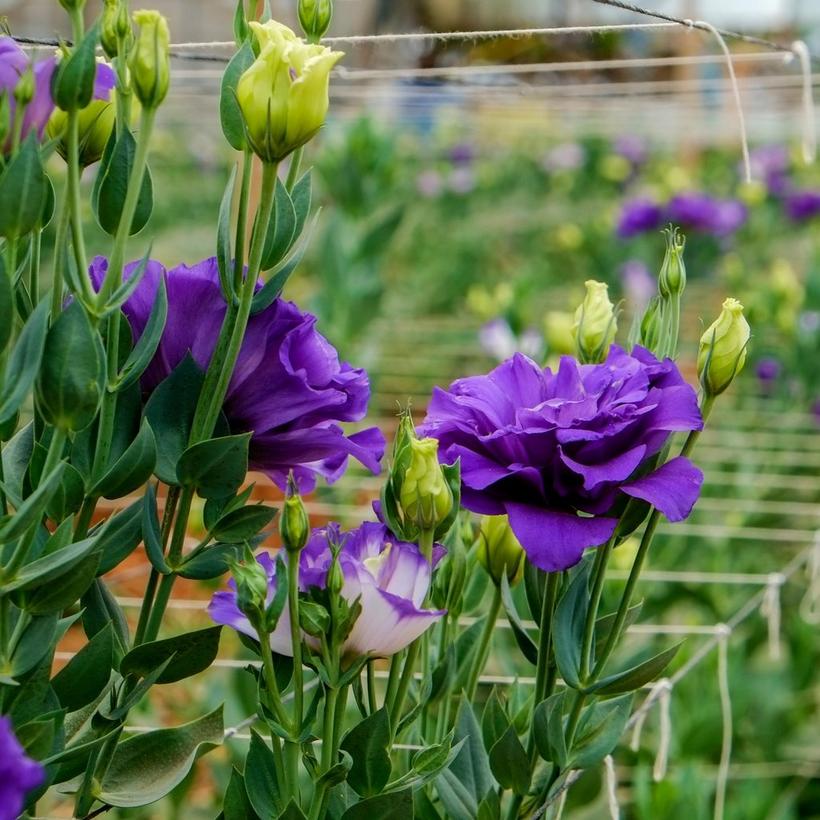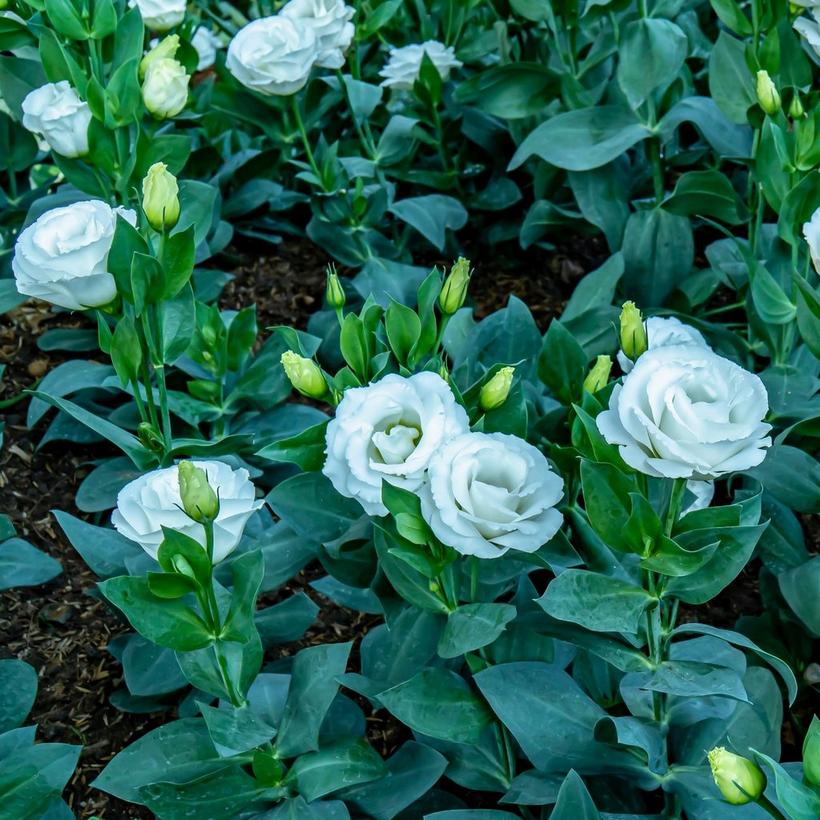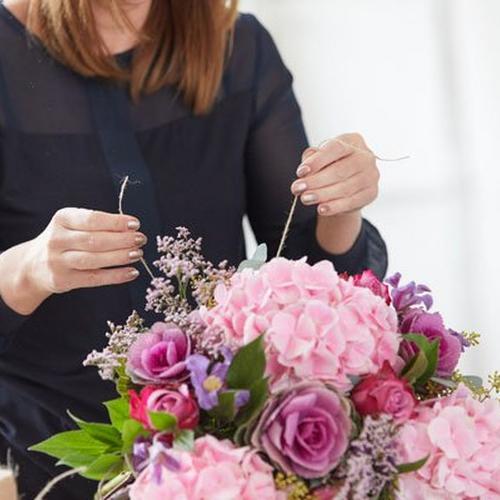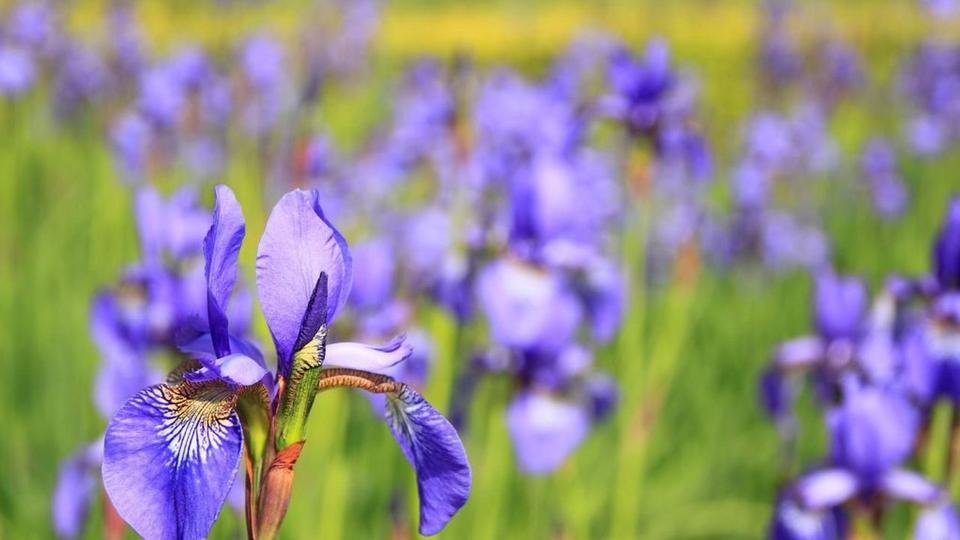The Ultimate Guide to Lisianthus
The soft and romantic, rose-like appearance of the lisianthus makes this cut flower a favourite for many bouquet arrangements – especially since it comes without the thorns!
Often mistaken for the rose or peony, the lisianthus features a beautiful flower that comes in a variety of colours to suit just about any occasion.
Native to the warmer climes of southern North America, Central America and northern South America, the lisianthus is an exotic and hardy flower that can say thank you, congratulations and ever-lasting love all at once.
Lisianthus meaning and symbolism
The name lisianthus comes from the Greek words ‘lysis’, meaning dissolution, and ‘anthus’, meaning flower. Despite the Greek meaning dissolving flower, the lisianthus is a hardy plant that grows in tough terrain with fleshy, almost succulent foliage.
The flowers of a lisianthus are breathtakingly beautiful, thanks to their rose-like appearance and bold colours. The bi-colour options available today add a layer of elegance as the tips of the flowers look like they have been dipped in watercolours.
Historically, this flower has symbolised charisma, appreciation and congeniality. Today, the symbolism of lisianthus has broadened and includes the following:
- Charisma
- Confidence
- Gratitude
- Appreciation
- Outgoing nature
- Truth
- Luck
- Lifelong bond
Whether you want to bid farewell to a friend, celebrate a bride-to-be or you simply wanted to express your gratitude to someone, lisianthus is the ideal cut flower for your bouquet.
Alongside the symbolism of the flower, the chosen colour can also play a part in depicting a meaning to your recipient.
For instance, a pink lisianthus arrangement would be ideal for the birth of a new arrival, symbolising happiness, youth and innocence.
On the other hand, purple can represent royalty, ceremony and pride, meaning the flowers would work better in a bold arrangement to celebrate a ceremony or achievement.
Lisianthus facts
- Also known as the Prairie Gentian, or Texan Bluebell, the lisianthus is native to the grasslands of southern North America, Mexico, the Caribbean and northern South America.
- This hardy plant produces bell-shaped flowers that are often mistaken for roses or peonies.
- The botanical name for lisianthus is Eustoma grandiflorum, and the plant comes from the Gentianaceae family.
- Since the name, lisianthus, can be hard to pronounce, they’re also often known as ‘Lizzies’ for short.
- Historically, the lisianthus was also known as the bitter flower, since it was used in herbal medicine and had a very bitter taste. Today, the flower is simply used decoratively.
- The foliage of the Lisianthus is dark green and fleshy, and the flowers, which are either single or double, come in a wide array of single or bi-colours.
- The flowers themselves are scentless, however the colour spectrum and appearance of the flower more than make up for this with their undoubted wow factor.
- Lisianthus can be tricky to grow – and certain conditions are required. Well-drained soil is key, alongside warm temperatures and lots of sunlight. Once you have growing established it can take up to six months for flowers to bloom.
- With multiple meanings that stem from this delightful flower, such as appreciation, gratitude and life-long bonds, it's no surprise that the lisianthus is a popular choice for bouquets. As the birth flower for Sagittarius, it’s a particularly good choice for a friend or loved one with this star sign.
Types of lisianthus
Lisianthus flowers are scentless, however their sheer beauty, vast colour spectrum and long vase life mean they’re still a popular choice – even among the more fragrant bouquet flower options.
Each type of lisianthus flower comes with its own special meaning, making the beauty of the flower even more special for the recipient.
White lisianthus
Purple lisianthus
Pink lisianthus
Brown lisianthus
When to plant lisianthus
Lisianthus can be tricky plants to grow, as they’re very particular about their environment. The seeds need light and warmth to germinate, but you may find that rather than using the natural seeds, pelleted seeds may be easier to start with as they are much easier to sow.
Seeds should be sown in late winter or early spring, but since they originate from warmer climates, they will need some help to start germination when grown in the UK. The soil must be moist but well-drained, and for the best results a heated propagator can be used at between 20 to 25 degrees Celsius.
Light is required for germination, so it’s vital that the seeds aren’t covered up. This process can take up to three weeks, but as soon as four true leaves have formed on your plant you are ready to pot into 9cm individual pots. These pots must be kept at around 18 degrees Celsius.
Before your lisianthus can be planted outside in your garden, you will need to harden the plant to the spring climate, but only once the last frosts have passed. Once you’re ready to plant you will need to select a sunny spot with rich, moist soil that is well-drained. Space each plant 20cm apart – they’ll then need regular watering until they’re established.
If you have a greenhouse or polytunnel, you can grow your lisianthus within these shelters to help moderate the temperatures.
Once established, the lisianthus is a relatively low maintenance flower to have in your garden, since no pruning is required.
How to care for Lisianthus
Soil
Prepare the soil: Ensure the soil is moist but well-drained. Lisianthus plants prefer rich, moist soil.
Germination
Wait for germination: Germination can take up to three weeks. Monitor the seeds and provide adequate water and light during this time.
Potting
Potting: Once the seedlings have grown and developed four true leaves, it's time to pot them into individual 9cm pots. Maintain a temperature of around 18 degrees Celsius for the potted lisianthus plants
Hardening
Harden the plants: Before planting lisianthus outside in your garden, you need to acclimate or harden the plants to the spring climate. Do this only after the last frosts have passed.
Watering
Regular watering: Water the lisianthus plants regularly until they become established in the garden.
When does lisianthus bloom?


Creating a lisianthus bouquet
With beautiful bell-shaped flowers, a vast colour spectrum of single and bi-coloured flowers, and multiple meanings for each variety, the lisianthus lends itself to a wide variety of bouquet arrangements. From bold and extravagant colours to the softer, heart-warming arrangements.
This diversity means the lisianthus is suited to a wide range of occasions, such as birthdays, celebrations, new arrivals, weddings, anniversaries and to simply say thank you.
To create a beautiful bouquet with Lisianthus, follow these steps:





%20(1).jpg?$poi-square$&fmt=auto&qlt=default&fmt.jp2.qlt=60&bg=rgb%28254%2C+204%2C+167%29&w=960&aspect=16%3A9)

